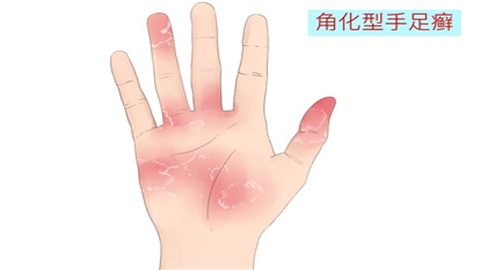The reason why tinea manuum and tinea pedis become more itchy at night
Generally, the possible reasons for increased itching at night in cases of tinea manuum and tinea pedis may include elevated temperature, heightened attention to symptoms, dermatophyte infection, fissured eczema, and bacterial infection secondary to tinea pedis. The appropriate solution depends on the specific cause, and prompt medical consultation is advised for treatment according to medical guidance. Details are as follows:

1. Elevated Temperature: At night, the temperature of the feet or hands may rise. In a warm and humid environment, fungal growth accelerates. Simultaneously, skin blood vessels dilate and blood flow increases, making the skin more sensitive to fungal infections, thus triggering or intensifying itching. Before bedtime, soaking feet or hands in warm water followed by thorough drying, especially between the toes and fingers, can help reduce fungal proliferation.
2. Heightened Attention: At night, individuals are generally more relaxed and more likely to focus on physical discomfort. This makes patients with tinea manuum or tinea pedis more aware of itching, which may even exacerbate symptoms. Maintaining a positive mindset and trying relaxation techniques such as deep breathing and meditation can help divert attention.
3. Dermatophyte Infection: Dermatophytes are the primary pathogens causing tinea manuum and tinea pedis. At night, due to increased temperature and humidity, fungal growth accelerates, worsening the infection and intensifying itching. Redness may also appear on the hands or feet. Antifungal medications such as ketoconazole cream, terbinafine hydrochloride cream, and bifonazole cream may be used as directed by a physician.
4. Fissured Eczema: Fissured eczema is a skin inflammatory condition mainly characterized by dryness, cracking, and itching of the skin. At night, increased temperature and faster skin moisture evaporation may worsen dryness, thereby triggering or intensifying itching. Dryness may also occur on the hands and feet. Anti-inflammatory medications such as mometasone furoate cream, hydrocortisone butyrate cream, and desonide cream may be used under medical guidance.
5. Bacterial Infection Secondary to Tinea Pedis: Patients with tinea pedis often experience impaired skin barrier function, making secondary bacterial infection more likely. At night, due to increased temperature and humidity, bacterial growth accelerates, worsening the infection and intensifying itching and pain. Swelling may also appear on the feet. Antimicrobial medications such as erythromycin ointment, mupirocin ointment, and itraconazole capsules may be used as directed by a physician.
During treatment, it is important to follow medical advice, take medications on time, and adjust lifestyle and dietary habits to promote recovery.
References:
[1] Zhang Xuejun. Dermatology and Venereology [M]. 9th Edition. Beijing: People's Medical Publishing House, 2018.
[2] Wang Aiping, Li Ruoyu. Superficial Fungal Diseases [M]. Peking University Medical Press, 2017.




